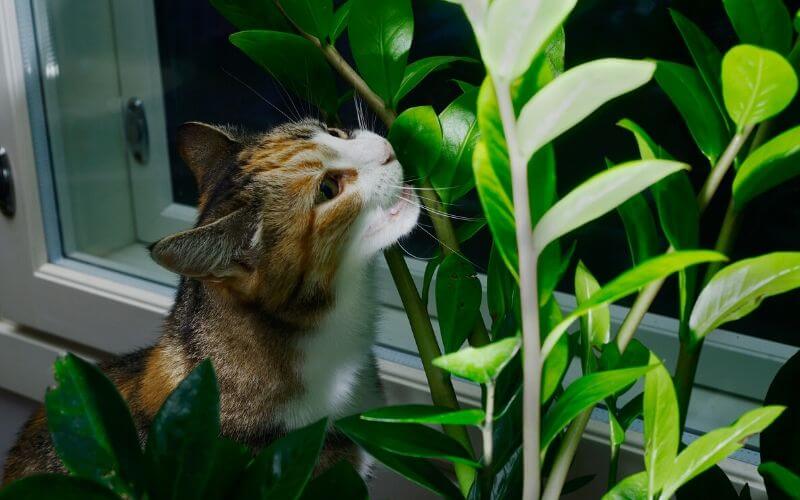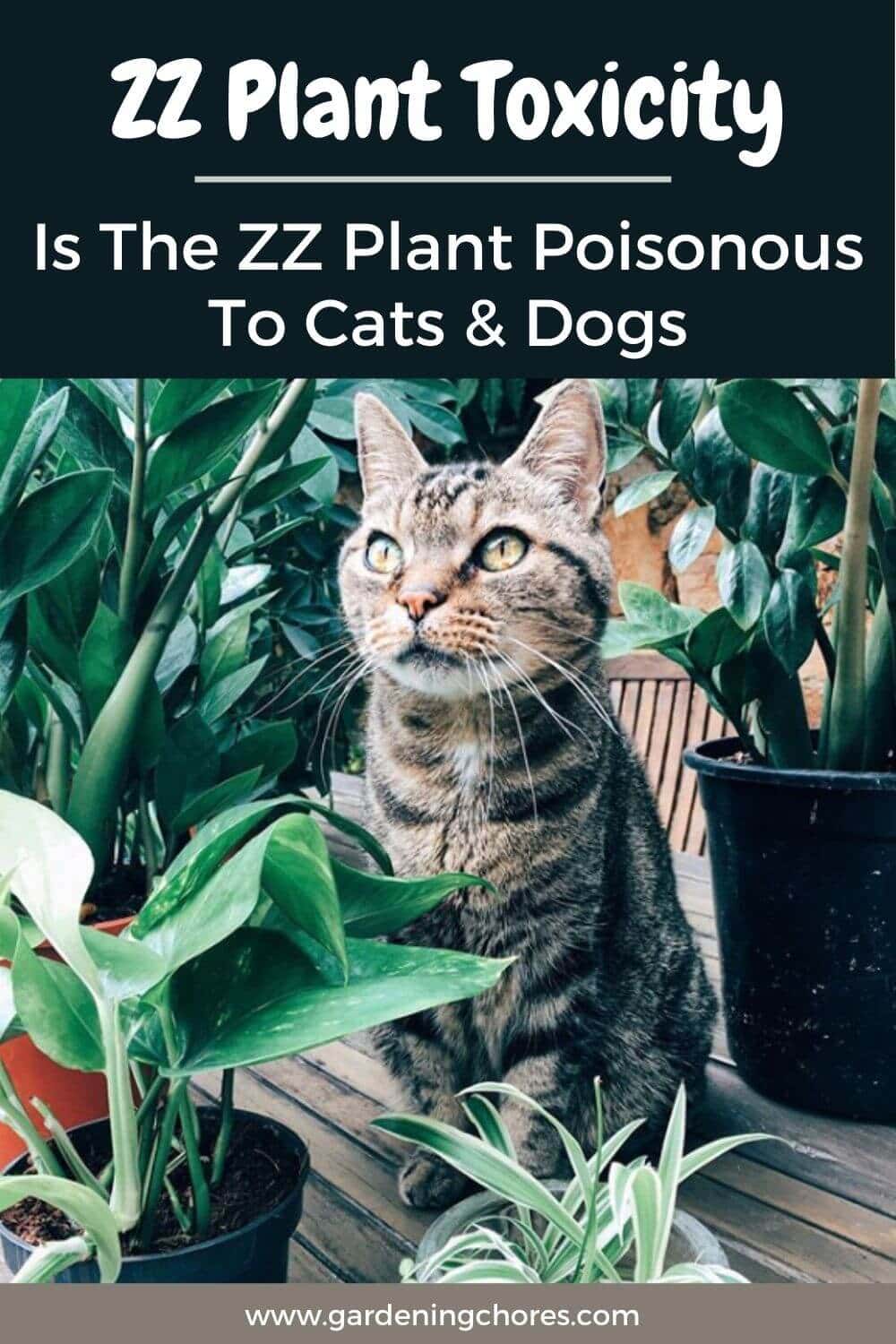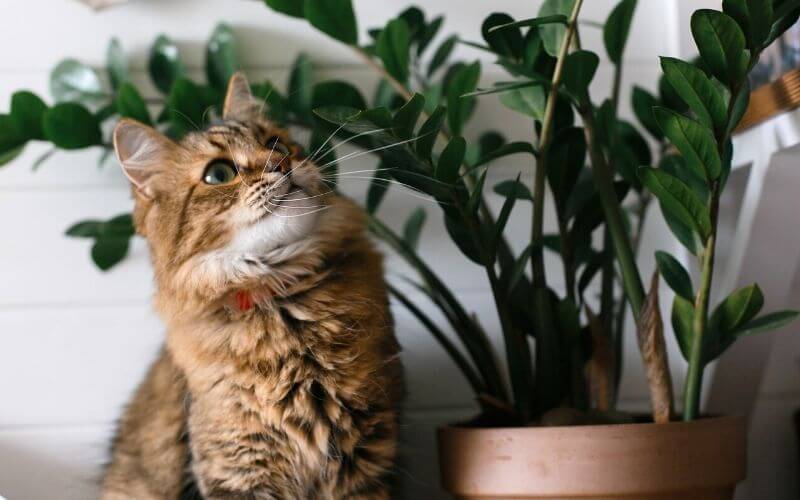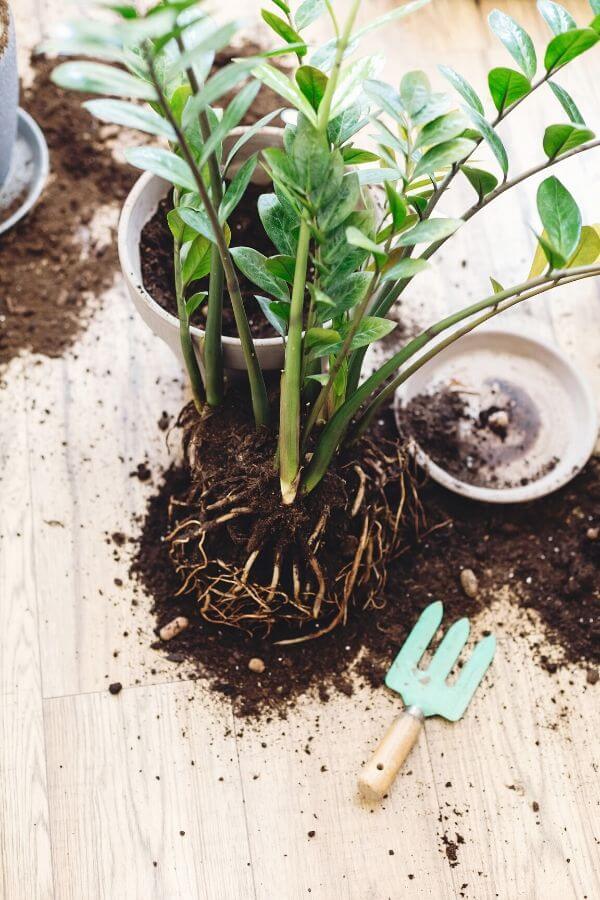
Mesmerizing leaf patterns, ability to purify the air, and low maintenance standards have made the ZZ plant a popular choice for anyone looking to add a touch of green to their home.
But could this seemingly ideal house plant actually be a lurking danger? Claims of high poison levels have raised concerns that this plant may be unsafe for your home.
So, is the ZZ plant actually poisonous? Yes, the ZZ plant is mildly poisonous to cats, dogs and humans if directly ingested. Exposure to the plant can also cause minor skin and eye irritation. The toxicity of this plant is derived from the calcium oxalate crystals located in the sap. These extremely small and sharp crystals are what cause the adverse symptoms associated with this plant.
Fear not! The risks associated with the ZZ plant have notoriously been blown out of proportion. This lovely plant can still be safely kept in your home if you follow a few easy guidelines.
Throughout this article we will explore all you need to know about ZZ plant toxicity to cats and dogs as well as tips on how this wonderful plant can safely join your green family!

Why is a Poisonous Plant So Popular?
Some people may be wondering why anyone would even bother keeping a ZZ plant considering it has potential risks to people and pets.
Even with these risks plant owners adore this plant for a range of reasons, and for many people the benefits of the ZZ plant outweigh the mild risk of poison exposure.
From its undemanding standards, to its ability to purify the air, there is no shortage of appealing qualities that this plant has to offer.
A Low Maintenance Plant with High Quality Appeal
The ‘ZZ plant’ is one of many common names for Zamioculcas zamiifolia. Other names include eternity plant, aroid palm, Zanzibar gem and my personal favorite, the emerald palm.
These monikers effortlessly paint a portrait of the plants’ luscious waxy green leaves that look as though they belong in a tropical paradise.

The unique leaf patterning and overall appearance makes the ZZ plant a wonderful addition to any room. Not only is this plant beautiful,it is also incredibly easy to take care of.
If you don’t want to be tied down by a high maintenance houseplant but desire something lusher and more appealing than a cactus, this may be the perfect plant for you!
Native to eastern Africa, this drought resistant plant allows even the most neglect ful of owners to easily achieve a thriving ZZ plant of their own.
It grows best when watered once every 7 to 14 days but can survive up to 4 months without water!
This impressive feature makes it an ideal choice for forgetful plant owners as well as those that often travel.
The hardy ZZ plant is not too picky about lighting either. Although it grows best in bright, indirect light t can tolerate most lighting types, even shade! As long as you keep it out of direct sunlight your plant will be happy to flourish for you.
This plant is also well known for its air purifying abilities. In a 2014 study conducted by the University of Copenhagen they found that the ZZ plant was able to remove volatile organic compounds (VOC’s) such as benzene, trichloroethylene, and formaldehyde from the air (source).
This means that keeping a ZZ plant will help purify the air and add extra freshness to your home.
In addition to all of this, itrarely has disease or pest problems, produces beautiful flowers similar to the peace lily, and can easily be propagated!With so many spectacular qualities all wrapped up in just one plant it’s no wonder that it has gained such popularity.
At this point you may be halfway out the door to go get your very own ZZ plant, but before you do let’s dive into some important topics that all ZZ plant owners should be aware of.
How Poisonous is the ZZ plant?
Not very poisonous. In fact, the ZZ plant is so mildly poisonous that it functions closer to an irritant than a true poison.
Dr. Leonard Perry, a horticulture professor at the University of Vermont, states that “You may see other mentions of this plant being highly toxic, claims which are overblown and have not been proven” (source).
This seems to be the consensus throughout the professional and scientific world. The likelihood of actually being poisoned by this plant is quite rare.
The Children’s Hospital of Philadelphia also notes that “poisoning from swallowing an oxalate-containing plant [such as the ZZ plant] is rare” (source).
Why Are ZZ Plants Toxic?
Similar to other members of the Araceae family, the sap of this plant contains calcium oxalate crystals.
The plant naturally produces these crystals to function as a form of defense against predators, and to regulate calcium in the plant tissue. The calcium oxalate crystals are extremely small, and very sharp.
These sharp crystals are what cause burning sensations when the sap is consumed or exposed to bare skin.
Which is a great attribute to have in the wild because any animal that may come across the ZZ plant thinking it would make a tasty snack will quickly learn their lesson in one bite.
Well that sounds very unfortunate for the unlucky herbivore, but how does the ZZ plants toxicity affect you and your cats and dogs?
Symptoms of ZZ Plant Poisoning in Humans and Pets
The sharp crystals in the sap of the ZZ plant will cause irritation of the skin and if ingested can show itself in various ways.
It is important to be aware of the different symptoms associated with poisoning from this plant in case you, your loved ones, or your pets start showing these signs.
What Happens If I Eat It?
Eating the ZZ plant is not advised! In the rare circumstances that you, your child, or someone you know eats this plant here is what you could expect:
Usually people will spit out the plant due to the painful sensations, but if swallowed the following symptoms are likely:
The Children’s Hospital of Philadelphia notes that, “with most of these plants, [including the ZZ plant,] vomiting and diarrhea are mild and should last only a few hours. Ingesting small quantities of these plants should not cause any symptoms.
However, eating an amount comparable to the size of a small salad would be poisonous”(source).
As tantalizing as a sharp poisonous salad may sound, it is not advised to ever add this plant to your dinner menu.
What Happens If I Touch It?
Due to the sharp crystals, exposing bare skin to this plant will result in skin irritation and the possibility of a minor rash.
Touching your eyes after handling a ZZ plant can also cause discomfort and irritation. Although direct contact with this plant will only cause minor discomfort it should still be avoided.
What Happens If My Dog, Cat, Or Horse Is Exposed To It?

Similar to humans, if your pets’ bare skin, mucus membranes, or eyes are exposed to the crystal containing sap of this plant you could expect temporary irritation and discomfort.
If your pet attempts to eat a ZZ plant the sharp crystals will cause oral pain which will often result in them spitting out the plant, but not always.Pets that consume this plant may show the following symptoms:
The onset of these symptoms in pets will appear within two hours of them eating the ZZ plant, and most recover within 24 hours (source).
If you notice these symptoms in yourself, your loved ones, and/or your pets it’s important to know how to treat them.
Treating ZZ Plant Exposure
Exposure to the ZZ plant will rarely result in any severe conditions, but it can still cause discomfort.
So, it is best to remediate the situation as quickly as possible to keep the negative reactions to a minimum.
Treating Humans
In the event that you or someone else eats a ZZ plant you should:
If you or someone else touches the plant wash your hands as quickly as possible and avoid touching your eyes.
Treating Pets
If your pet starts showing symptoms of ZZ plant exposure you should:
In case your pet has eaten enough of the plant to upset their stomach and cause vomiting or diarrhea, drinking water will help them stay hydrated.
For the first few hours after noticing their symptoms It may be a good idea to keep an eye on them to make sure their condition is improving.
If you have an animal that enjoys ice cubes or other pet-safe frozen treats this would be a wonderful time to give them a chilly snack.
The cold will help soothe their mouth, bring down the swelling, and reduce any burning sensations. Plus, they had a rough day and deserve a little treat!
Protecting Your Pets and Yourself
All this talk of poisoning may sound scary, but the risk associated with this plant is truly low.
As long as you do not directly ingest a ZZ plant the worst you could expect is minor skin irritation, but even that is very easy to avoid.
Even though the symptoms are quite minor it is still best to avoid exposure in the first place.
Watering And Handling

Although this hardy plant can go quite a while without water, it will need to be replenished at some point. When watering your plant try to avoid touching its leaves or stems. This is usually easy to do with your typical watering can.
If you do touch the plant while repotting, moving, or other situations, it is OK! Do not panic!
Just make sure to wash your hands to avoid any irritation and to avoid spreading the crystals to sensitive areas such as your eyes.
You can also take an extra step of precaution by wearing gloves while handling the plant.
Perfect Placement
For those with children or pets, it is important to find a good place to put your ZZ plant that is out of reach to them.
Such as on a shelf, table (depending on the height), hanging from the ceiling, or any other spots in your home that are out of reach to your children and pets. However, not all pets stay on the ground.
In the case of notoriously curious cats, who seem to believe no place is off bounds, you can use different deterrents to keep them at bay.
Such as sprinkling cayenne pepper at the base of the plant, leaving citrus rinds around the plant, or even misting lemon juice onto the leaves.
Unfortunately, if you have an extremely determined pet who commonly eats plants, this may not be the right plant for you.
Stay Informed!
In general, the ZZ plant is safe to keep in your home as long as you use the precautions discussed here.
Such as avoiding bare skin contact, not directly ingesting the plant, and keeping it away from pets and children.
However, it is important you are aware of the possible risks presented by owning a ZZ plant and make an informed decision that is best for your situation.
As with all plants, it is vital to learn of the possible risks before bringing a new plant into your home.
If the ZZ plant seems like it would be a good choice for you then I wish you the best of luck in welcoming this charming plant to your home.

Written By
Emily O Bethke
Born in northern Wisconsin, Emily has always had a passion for plants. This passion has led her to work in greenhouses, landscaping, and academic plant research at multiple university’s. She graduated from the University of Wisconsin Milwaukee with a BS in conservation and environmental science. When she isn’t caring for her plants or writing you can find her traveling, cooking, at live music shows, and spending time in nature.
